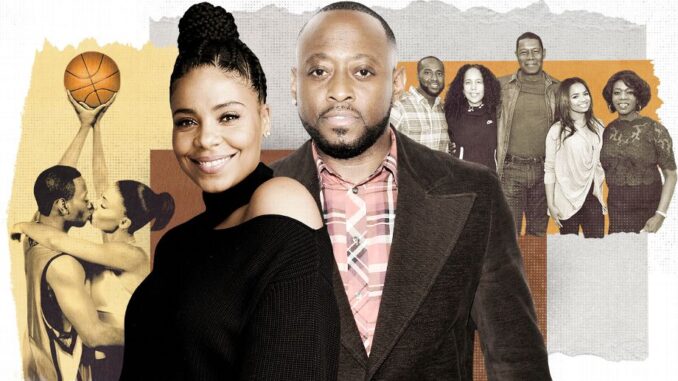
‘Love & Basketball’: An oral history of the film that changed the game
Twenty years after “Love & Basketball” hit theaters, the cast and crew share behind-the-scenes stories of how the New Line Cinema production went from dream to reality. And its writer-director, Gina Prince-Bythewood, speaks on what initially inspired her to “make a movie about a black girl who wants to be the first [woman] in the NBA.”
Prince-Bythewood, a former UCLA track runner who played basketball in high school, was working as a TV writer in the mid-1990s. But she longed to tell a semi-autobiographical story about a female baller. She quit her job, wrote the script and began shopping it around.
“Every day, my agent would say, ‘Another one turned it down,'” Prince-Bythewood remembers. “Studios gave feedback that the film was ‘too soft,’ that we needed [scenes] where a character is chasing her husband with a knife.”
Her script somehow reached the heads of the Sundance Institute. She was invited to the directors lab, where she cast multiple readings. One in particular blew away Sam Kitt, then the head of Spike Lee’s production company — 40 Acres and a Mule Filmworks — and subsequent wound up in the hands of New Line Cinema. (Lee signed on to Prince-Bythewood’s project as a producer. He worked with New Line Cinema on “Bamboozled,” also released in 2000.)
With New Line Cinema, Prince-Bythewood was able to explore the lives of her protagonists, Monica Wright (Sanaa Lathan) and Quincy McCall (Omar Epps), on her terms. The movie follows the childhood neighbors as they move from competitors on the court to confidants and companions off of it. Some scenes stick with us, like when Monica and Quincy shared their first kiss before a bike ride to school, and, of course, when Monica plays Quincy in a game of one-on-one for his heart two weeks before he’s due to wed another woman.
But what makes the film so indelible is that it shows a female athlete challenging her partner, her sport and the status quo without being painted as a shrew, undesirable or any other limiting descriptor.
“What’s revolutionary is that this amazing black woman can love both [basketball and her partner] equally and still be a woman,” says “Queen & Slim” screenwriter Lena Waithe. “She could still be herself.”
Monica goes on to play in the burgeoning WNBA, which was founded in 1996 and didn’t exist when Prince-Bythewood started writing the script. Quincy had an injury-marred stint as a Laker. Still, they prove to be more than leads in an early-aughts hoops flick or relatable characters in a coming-of-age love story. They’ve become archetypes, inspirations and representatives of lives we knew but had rarely seen onscreen.
To mark the 20th anniversary of “Love & Basketball” on Tuesday, ESPN spoke not only to the creatives behind the film and cast who brought Prince-Bythewood’s script to life but also to WNBA players who thought that if Monica Wright could make it to the league, they could too.
Everyone quoted is identified by the title they held during the film’s production, unless otherwise noted.
